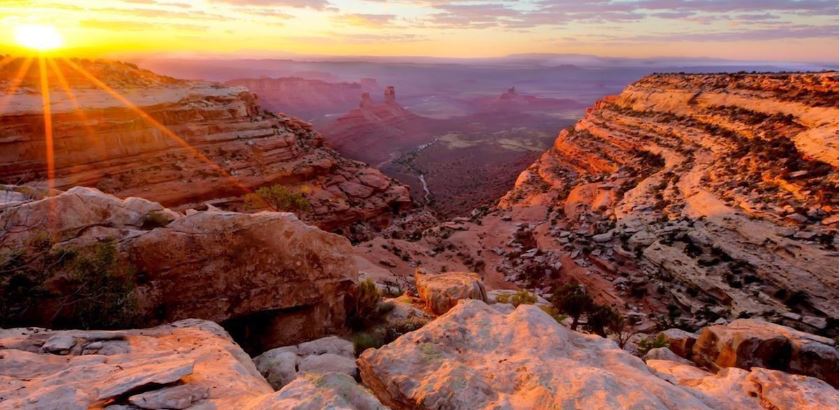Viewpoint: This Land is Your Land
December 10, 2017
On December 4, President Trump announced that the Bears Ears National Monument would be reduced by over a million acres. That’s a lot of land, but to visualize it, imagine a tennis court. Now, imagine 16 million tennis courts; that’s about how much land Trump cut from Bears Ears.
After this reduction, Bears Ears was divided into two separate, protected areas. According to Science magazine, “[Bears Ears] contains more than 100,000 archaeological sites, including cliff dwellings, rock art, and other structures belonging to Ancestral Pueblo people.” The reduction of Bears Ears boundaries puts many of these sites in danger. They are now exposed to destruction by not only looters, but companies.
Southern Utah Wilderness Alliance created a map that detailed areas of high, moderate, and low potentials for oil and gas development. The map shows that much of the areas that have high potential for development will now no longer be protected.
Bears Ears was only one of 27 national monuments listed as being reviewed by the Department of Interior. Another national monument in Utah, Grand Staircase-Escalante, is being reduced by 45% (New York Times). Among the other national monuments under review are Giant Sequoia, Sonoran Desert, Marianas Trench Marine National Monument, and Papahanaumokuakea Marine National Monument.
These National Monuments are all important, unique, and need protection. Giant Sequoia National Monument is home to the world’s largest trees. According to the USDA, “Wide-spread logging before the turn of the century inspired the public to clamor for their protection”. As for the Sonoran Desert National Monument, it is “the most biologically diverse of the North American deserts, and captures a significant portion of that diversity” (Bureau of Land Management).
The Marianas Trench Marine National Monument is the deepest place on Earth and its “reefs and waters are among the most biologically diverse in the Western Pacific” (U.S. Fish and Wildlife Service). Off of Hawaii, Papahanaumokuakea Marine National Monument is a UNESCO World Heritage Site and “the biggest protected area – terrestrial or marine – on the planet” (Papahanaumokuakea Marine National Monument).
While we need to keep this all in mind, it should also be noted that there is currently legislation being introduced that would limit the amount of land that can be protected. According to Time, “Utah Republican Rep. Rob Bishop…has introduced a bill that would prevent presidents from designating monuments larger than 85,000 acres and give states and local officials the power to veto a monument larger than 10,000 acres.” To contact Representative Rob Bishop and voice concerns over this bill, visit this site.
The deep cuts to Bears Ears and Grand Staircase-Escalante show what Trump does not value. The clear lack of respect for both Native Americans and the environment is something we should all find alarming. Not only is Bears Ears sacred to Native American tribes and loved by many, but the archaeological sites that will no longer be protected contribute to the story of us. When our land is disrespected, we are all disrespected.






